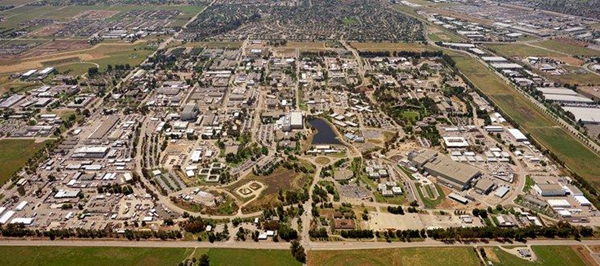Lawrence Livermore National Laboratory (LLNL) has partnered with battery materials specialist Ampcera to develop the next generation of lithium battery cathodes using3D printing. The project, supported by a $1.5 million grant from the US Department of Energy's Office of Advanced Manufacturing, will see the research partners utilise a solvent-free laser powder bed fusion (LPBF) process. The aim of this work is to create unique 3D cell structures capable of faster charging and higher energy density, while cutting manufacturing costs and reducing energy consumption.
"I applaud the Department of Energy for investing millions of dollars in innovative clean energy projects in California," said U.S. Senator Alex Padilla (D-CA). "Meeting our emissions goals and addressing the climate crisis will require a concerted effort to develop new technologies - including better lithium-ion batteries. Today's research will enable us to create a strong clean energy economy in the years to come."

The choice of 3D printing promises to reduce costs and improve performance. Image from LLNL.
The need for high-performance batteries
Some industry experts such as Aaron Bent, CEO of materials supplier 6K, estimate that the market for lithium-ion batteries will grow tenfold over the next decade. With the rise of the electric vehicle industry, as well as telecommunications backups, data centres and power plants, the lithium-ion batteries of the future will need to deliver higher energy and power density at a lower cost. According to LLNL, battery manufacturing technologies based on paste casting and coating, which are widely used today, are working to advance these targets. These methods utilise energy-intensive processes and rely on hazardous solvents as the raw material for the electrodes.
In addition, they are based on specialised production lines that can only produce one type of cell at a time, which means there is no design flexibility in terms of cell geometry.
3D printing methods
The team, led by the project's Principal Investigator Jianchao Ye, is now looking to use LPBF to hot-melt a mixture of positive electrode powders onto an aluminium collector to create bespoke, high-performance cell structures. Thanks to its expertise in solid-state electrolytes and electrode materials, Ampcera will provide the cathode powder while LLNL will perform the 3D printing operation. LLNL claims that by eliminating the use of cathode solvents, it can enable high-volume cell fabrication and increase productivity. The additive approach is also expected to reduce overall energy consumption and costs, and increase energy density. Jianchao Ye added: "The environmentally friendly process allows for the processing of thick, high-capacity 3D cathode structures, enabling lithium-ion batteries to achieve fast charging targets of 80% in 15 minutes or less." Looking ahead, the two organisations will continue to work closely together to develop 3D printed batteries before evaluating their performance in this area.
Hui Du, co-founder and CTO of Ampcera, concluded, "The collaboration between LLNL and Ampcera will accelerate the development and commercialisation of ultra-fast and low-cost L-PBF additive manufacturing technologies for the manufacture of high-performance lithium batteries. Having developed a 3D structured positive electrode, we hope to extend the technology to negative electrode designs and further explore its application in all-solid-state lithium metal batteries with higher energy and power densities."

Lawrence Livermore National Laboratory. Photo from the US Department of Energy.
Comment by Mohou.com: 3D printing of energy storage devices is largely a niche area, but there are companies working to commercialise the technology. Earlier this year, Blackstone Resources, a Swiss investment firm focused on battery technology, announced that it expects to begin commercialising new 3D printed sodium-ion battery designs as early as 2025. The company's own German R&D subsidiary, Blackstone Technology, along with a consortium of academic and industrial partners, will demonstrate its 3D printed solid-state batteries in real-world use cases over the next three years.
Elsewhere, battery 3D printing specialist Sakuu Corporation has recently reached a new milestone in the development of its lithium metal batteries, reaching a benchmark energy density of 800 Wh/L. According to the company, this achievement is an important step in its roadmap towards achieving fully 3D printed solid-state batteries in excess of 1,200 Wh/L by 2023.



